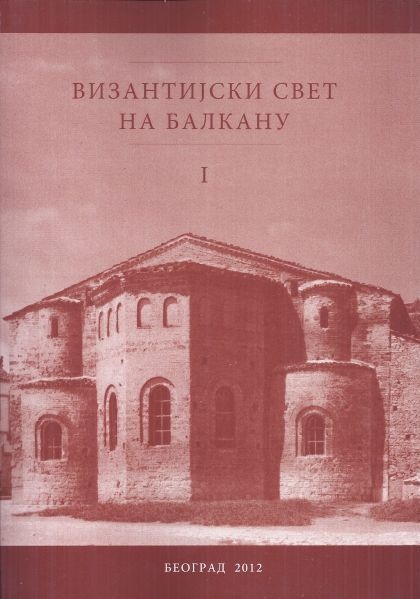О односу управне и црквене организације на подручју охридске архиепископије
On the Relationship of Administrative and Ecclesiastical Organisation In the Territories of the Ohrid Archbishopric
Author(s): Bojana Krsmanović
Subject(s): Military history, Political history, 6th to 12th Centuries
Published by: Vizantološki institut SANU
Summary/Abstract: This paper considers the data on the military, civil and ecclesiastical organisation, which Byzantium set up in the Balkans after 1018/1019. It presents the view that the development of military and ecclesiastical organisation can be followed in satisfactory continuity and that the system of military and church authority coincided territorially with each other to a high degree. In establishing authority in the Balkans, Byzantium largely relied on conditions linked with the epoch of Samuel and his successors. The aforesaid was reflected in the military system of power, although after 1018/1019, Byzantium adjusted it to its own needs, in particular the organisation of the Church. The Archbishopric of Ohrid preserved to a great extent the episcopal structure of the Bulgarian Church from the period of Samuel and his successors in the territorial sense, until some time around the middle of the 11th century. The insistence of Basil II on continuity with the previous, Bulgarian epoch (visible on the basis of the bishoprics that were assigned to it, its autocephalous position, the choice of a “domestic” archbishop) represents one of the consequences of the significance that the Bulgarian Church had, as an institution in the process of Byzantium's taking control of the region in the interior ofthe Balkans. Also the assumption is presented that the church organisation set upin 1018/1019, was a substitute for the poorly developed civil system of authority in certain Balkan regions. Although the Archbishopric of Ohrid represented the most enduring Byzantine achievement in the Balkans, the system that had been established under Basil II underwent many changes in the course of the second half of the 11th century. The most striking testimony of the advanced process of Rhomaization was visible in the creation of a tradition regarding the origin of the Ohrid Archbishopric, according to which it was connected with Justinian I. Importance was already attached to that theory in the time of the Ohrid Archbishop Leo (middle of the 11th century). Just before the mid–12th century, this theory led to overlooking the Bulgarian origin of the Ohrid Church, which was finally confirmed by the official acceptance of the title of the head of the Ohrid Church — the Archbishop “of the First Justinian and All Bulgaria” in the time after 1261.
Book: Византијски свет на Балкану I-II
- Page Range: 17-39
- Page Count: 23
- Publication Year: 2012
- Language: Serbian
- Content File-PDF

